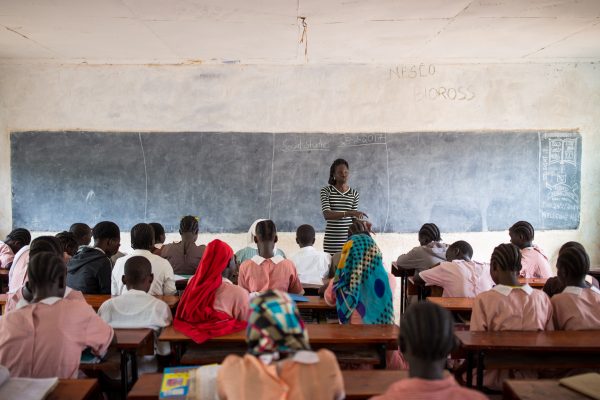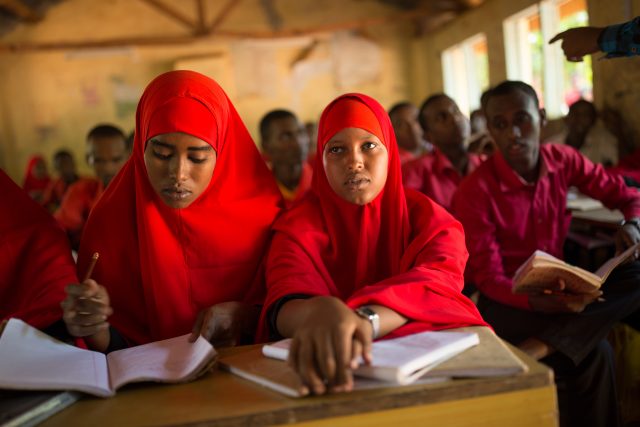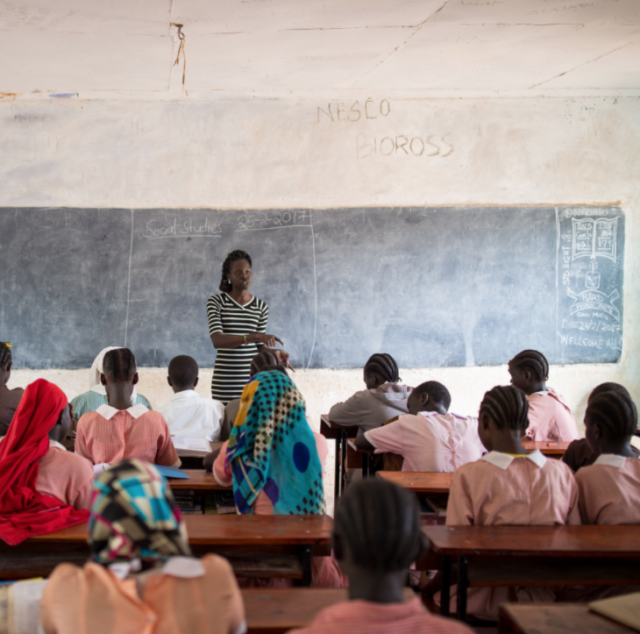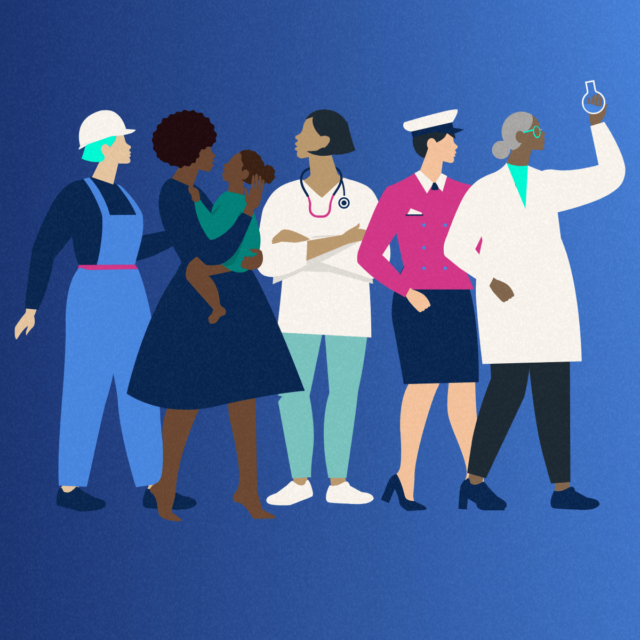
Refugee Camp, Kadujli Primary School. Kakuma, Kenya, Feb 2017.
As the sun rises over the dusty roads, its light begins to reflect on the corrugated tin rooftops. In these early hours, houses are already bustling with activity as young children prepare for school.
In this refugee camp, as in hundreds of others across the world, many girls are busy preparing breakfast while helping their siblings get ready for the day. After their chores are done, the girls who are fortunate enough to still be in school will hurriedly put on their uniforms and run to class, trying not to be late.
Globally, only 61% of refugees attend primary school. Many who miss out on an education are young girls, overwhelmed by the burden of household responsibilities, the threat of early and forced marriage, and poverty. For every ten refugee boys in primary schools, there are fewer than eight refugee girls.

Dadaab, Kenya.
Fatuma Omar Ismail understands these challenges well. She left Kismayo, Somalia, with her family when she was young. She spent her adolescent years in Dadaab, a complex of refugee camps in northern Kenya where her family still resides. Although she often struggled to find time for her studies, she was a brilliant student and she earned a scholarship to one of Kenya’s top secondary schools in Nairobi.
After years of hard work, Fatuma resettled in Canada through a scholarship provided by WUSC’s Student Refugee Program. She now studies chemical and physical sciences at the University of Toronto, one of Canada’s leading institutions.
But how did Fatuma overcome so many barriers to finally access higher education? And what can be done so that millions of other young girls can follow in Fatuma’s footsteps?
Through the Promising Practices in Refugee Education initiative – a partnership of Save the Children, Pearson, and UNHCR – Fatuma shared with us some of her reflections on how the global community can improve access to education for refugee girls:
- Promote more gender-friendly education systems
Fatuma suggests that we start by improving the ability of classrooms, curricula, and teachers to become more accepting and inclusive of girls. In practice that means:
- Developing curricula that includes female role models and encourages girls and boys to pursue non-traditional professions.
- Supporting teachers to increase their awareness on gender inequality and develop the skills and confidence to point out gender-bias in learning materials. Teachers can also play a positive role in reinforcing girls’ self-confidence as learners and encouraging the equal participation of boys and girls in all classroom spaces, including play and leadership roles.
- Building classrooms that are friendly and welcoming to both boys and girls. In these girl-friendly environments, girls are encouraged to come to the front of the classroom, and the teasing or harassment of girls in the classroom is closely monitored and disciplined appropriately.
- Strengthen digital literacy.
When she started high school, Fatuma wasn’t clear on the difference between a desktop and a laptop computer. Without skills in digital literacy, refugee youth will struggle to be competitive in their post-secondary education, and to find employment in the modern economy.
While many refugee youth have smartphones and are connected through Facebook and WhatsApp, the digital skills they will require later in life are different, and should be taught in the classroom.Training programs in online research and popular software programs are critical to supporting refugee youth in their education.
Currently, many post-secondary organizations, NGOs, and governments are exploring how higher education can be made accessible to refugee youth who are still in camps through online learning. With this new frontier in online higher education, skills in digital literacy will continue to be critical for refugee youth.
- Explore opportunities to expand Canada’s private refugee sponsorship model.
For decades, the Government of Canada has offered a private sponsorship model for refugees. Through this program, groups of citizens can work together – assisted by refugee settlement agencies – to support a refugee or refugee family to resettle in Canada.
Private sponsorship allows for more individuals to be resettled at lower costs for national governments, and increases the chance that resettled refugees will integrate quickly and feel welcome in their new homes. Fatuma was supported in her first year of studies at University of Toronto by a dedicated group of fellow students who helped her adjust to life in Canada and supported her to succeed.
Building on decades of experience in welcoming refugee students for resettlement, WUSC has developed a guide, “Building Educational Pathways for Refugees: Mapping a Canadian Peer-to-Peer Support Model.”
The guide presents WUSC’s unique framework for resettlement, education, and integration of refugee youth. Compiling advice and inspiration for governments, organizations, and higher education communities to join Canadian institutions in offering new educational pathways in their own countries for refugees.



